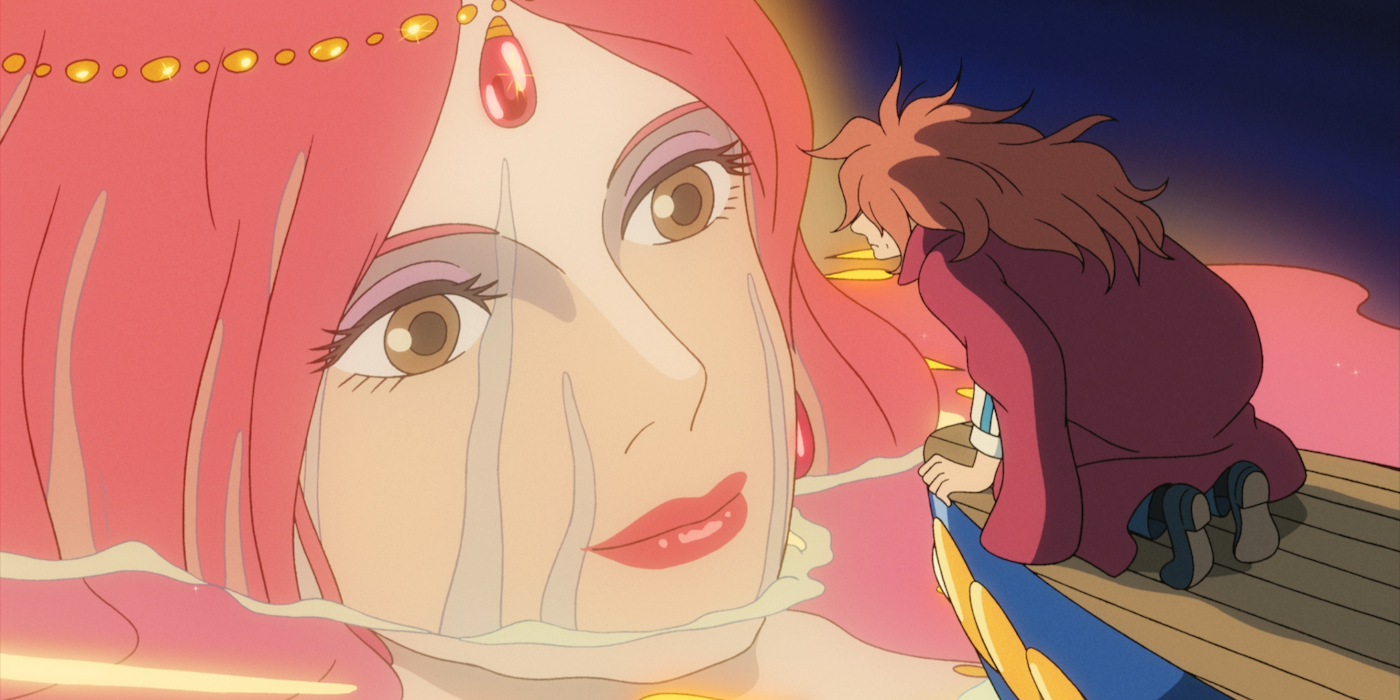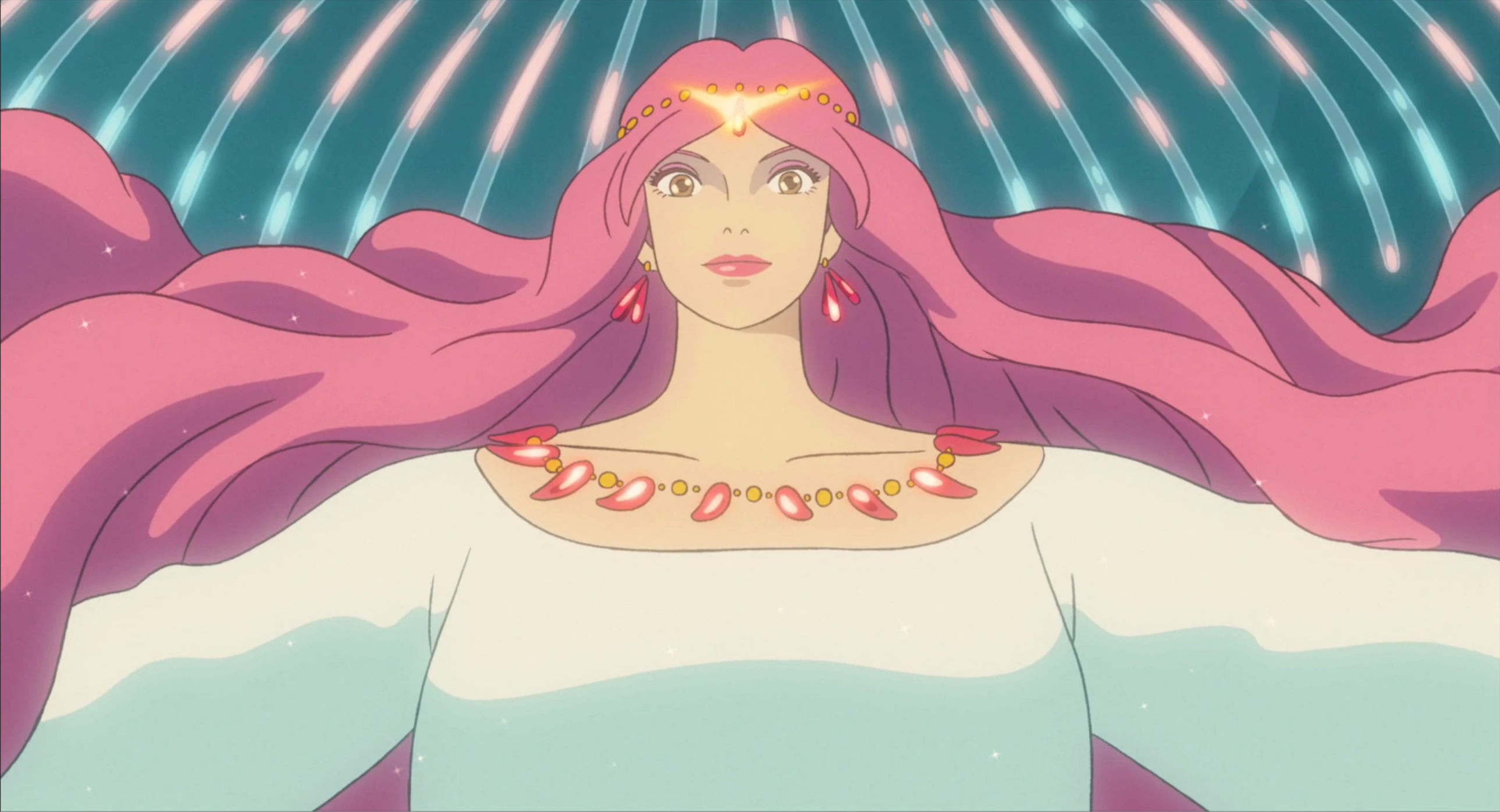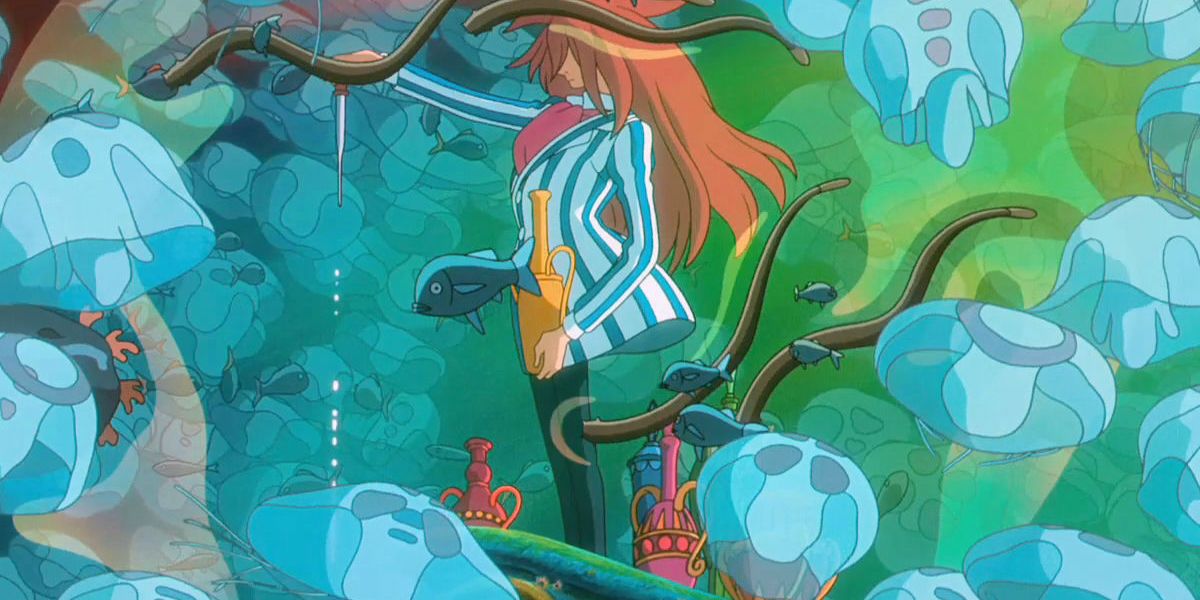Ponyo is perhaps the youngest-skewing of all Studio Ghibli films, give or take My Neighbor Totoro. Needless to say, the vast majority of people who watched it were not thinking about sex while watching it. Hayao Miyazaki, however, was when he made it. His development notes on the film, as collected and translated in the book Turning Point: 1997-2008, reveal just how much thought he put into the mermaids' sexuality.
Gran Mamare, Ponyo's giant goddess of a mother, is the character with the strongest sexual energy. If anyone was thinking about sex while watching Ponyo, it was most likely to wonder about the details of how the courtship between Gran Mamare and the human Fujimoto worked. Miyazaki's notes do not elaborate on those particular details, but they do offer a different perspective on her sexuality.
Though it's never mentioned in the movie, Miyazaki's 2006 pitch document for Ponyo reveals that Gran Mamare has "many husbands," Ponyo's father Fujimoto being just one of them. A 2007 memo addressed to composer Joe Hisaishi says that Gran Mamare "is fertile, polyandrous, and has countless children."
In his memo to Hisaishi, Miyazaki posits that Gran Mamare "is the figure of what Ponyo will become after she reaches splendid maturity in the sea." Ponyo herself is also described as "fertile and vulgar," and the director states that, when she's an adult, she "will ultimately have many love affairs." This news might come as a relief to those who worried that Sosuke's declaration of commitment at the end of Ponyo would lock the two five-year-olds together in a relationship for life.
Miyazaki also views the whole world of Ponyo in gendered terms. The sea represents "the feminine principle," while the land represents "the masculine principle." Fujimoto, a man who forsakes the land to live under the sea, is "perpetually in a state of estrangement," whereas Sosuke's father Koichi is "a symbol of the masculine principle whose very existence is vanishing." Sosuke's acceptance of Ponyo, "the pure manifestation of the feminine principle," is what is able to bring balance to the world, offering a comfortable coexistence between the masculine and the feminine.
It should be acknowledged that just because these details are written about in Miyazaki's notes does not make them officially "canon." The afterword for Turning Point notes that Miyazaki will often change details from his initial pitches as production goes on, so any details that aren't explicitly shown in the final film can't be taken as definitive. However, these notes of Miyazaki's do cast Ponyo in a very different light.
Hayao Miyazaki's Turning Point: 1997-2008, translated by Beth Carey and Frederick L. Schodt, is available in English from Viz Media.



